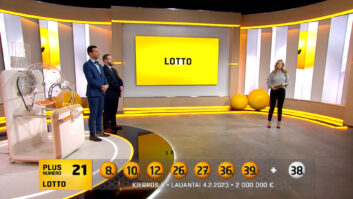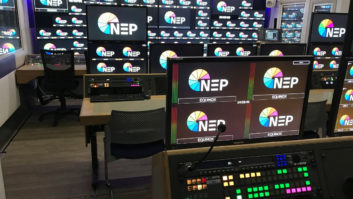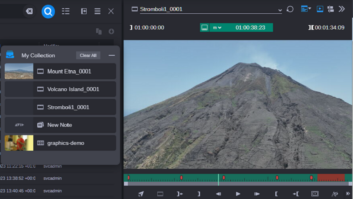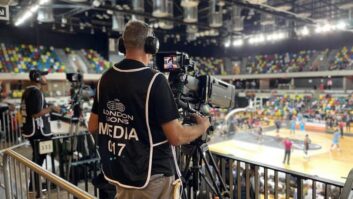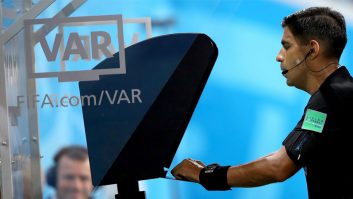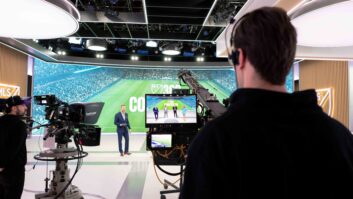NEP Finland is a production powerhouse, not just within the Finnish TV production market, but all over the world with half of its revenue coming from outside the country. Whether it’s the World Rally Championship, UEFA Super Cup football, or other major sporting or entertainment events, if it’s big, NEP Finland is there to ensure the highest quality production. As part of NEP Finland’s recent move to its new headquarters, the company built three new studios and five control rooms in Helsinki’s western Pasila district. One of the central goals in building these state-of-the-art, IP-based facilities, was to automate and streamline production for popular weekly shows such as the Finnish Lotto and Eurojackpot that NEP produces for Veikkaus, the Finnish national betting agency.
The Challenge
Jyrki Lepistö, deputy managing director at NEP Finland, oversaw the search for new technology that would not only achieve the company’s automation goals, but also reduce expenditures while future-proofing productions for maximum flexibility including remote and higher resolution workflows. To maximize their investment, Lepistö’s team wanted a system with flexible resources that could be easily redeployed and customized to suit the production. As remote productions have become increasingly popular, the team also wanted a system that could be potentially controlled from any location using the open internet and SRT connectivity, and a browser-based user interface. Being IP-based, the system should be capable of running on non-proprietary, COTS hardware in a data centre-type environment. Resources should be easily sharable with the ability to spin up and spin down processes as required. Graphics was another challenge with the goal of finding an integrated graphics engine that could live within the same environment, and benefit from the same resource flexibilities. Most importantly, operators wanted a system that was easy to transition to without a steep learning curve.
Finding the best fit
Lepistö was introduced to NetOn.Live and its LiveOS production platform by Jukka Keski-Loppi, CEO of Pipeline Media, a systems integrator specialising in broadcasts workflows, as well as colleagues at YLE, the Finnish public broadcaster. YLE had recently carried out a POC (proof of concept) demonstration with LiveOS and everyone had been very impressed with its feature-rich, all-IP production environment. Since NetOn.Live’s LiveOS platform is software-based and operates in a pure SMPTE ST 2110 IP ecosystem, it was considered the perfect fit to transition the Lotto and Eurojackpot productions into more streamlined and automated workflows. “LiveOS represents a tremendous value for us. It has all the features we were looking for with room for expansion. We have been particularly impressed with the quick responses we receive from the NetOn.Live team with regards to customisation for our unique needs,” says Lepistö.
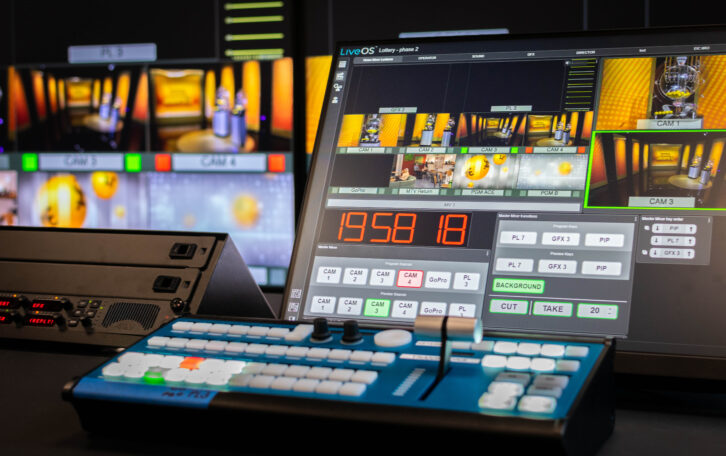
Lepistö’s team also liked the fact that LiveOS could be used remotely almost immediately giving the group a freedom of deployment previously impossible to achieve. “Unlike purpose-built proprietary systems of the past, we simply bought a few computers with software and some network switches, installed them in the data centre in the basement and we were ready to go,” he continues. “We added a couple of control surfaces for the operators who still wanted to have some tactile buttons and the classic T-bar feel. However, many operators are comfortable controlling everything from a screen or touchscreen interface.”
Another impressive accomplishment was the speed of implementation. LiveOS was installed and commissioned over the Christmas holiday and went live in January.
Integrations and automation
NEP requested that SPX Graphics by Softpix, an HTML-5 based application, be the graphics engine to be used within LiveOS. The first significant task for the NetOn.Live team was to integrate the graphics engine into the LiveOS platform. “The NetOn.Live engineering team fully integrated SPX Graphics into the LiveOS user interface so all graphics for the screen overlays as well as the video screens and everything in the gallery and the studio is controlled under the same user interface making it very easy for operators to use,” explains Keski-Loppi.
The flexibility and the shareability of LiveOS has enabled the production team to design production templates that can be instantly deployed. Jumping from the Lottery production to Eurojackpot production simply entails spinning up the current project while spinning down one that is no longer required. The new production workflow requires fewer physical and human resources to produce a seamless production at a fraction of the cost. Operators can modify their layouts as they want to further streamline their views and tools.
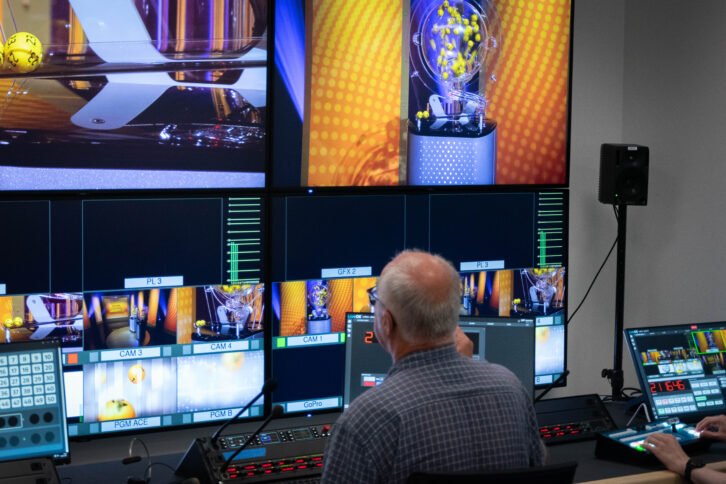
“Being able to customise and share means we no longer require dedicated multiviewers for everyone,” adds Keski-Loppi. “We can share things like timers, so the director knows when the B-roll is ending, and we don’t need to have dedicated clocks and timers in the galleries. Everything can be built into the user interfaces as required.”
In addition to automating cameras and setting shots, the production team is also able to automate graphics. For example, for the Eurojackpot production, the winning numbers are provided by the Veikkaus server and automatically populate the lower thirds, helping to provide a seamless and error free experience. In the future, both the Lotto and Eurojackpot production teams plan to automate their production rundowns to create identical shows with even less personnel.
Learning new tricks
As with most things, change can be difficult for people used to doing things in a certain way. Not unsurprisingly, some members of the production team were initially a little reluctant to learn a new system. “In the end, the transition for the team was surprisingly easy because the user interface is so intuitive and modern compared to the old software they were using,” says Lepistö. “The actual training period was quite short, and Jukka’s team had most everyone completely trained in just a couple of days.”
One of the benefits of a software-based solution is the ease in which NetOn.Live support can remotely access the entire system when asked and provide live remote support. When questions come up and new functionality is added, it’s just a couple of mouse clicks to quickly troubleshoot or give guidance to the production staff.
A template for the future
NEP’s production team is reaping the benefits of a streamlined workflow for the weekly Lotto and Eurojackpot shows. Lepistö and his team are confident they can automate even more capabilities as time goes on. “The system is now resolution independent, so we can do HD or even UHD productions as required simply by changing some parameters in the configuration,” says Keski-Loppi. “In this way, we’ve provided NEP with a future-proofed system.”
If NEP wishes to expand their system, they don’t need to buy dedicated hardware for playback channels, recording capacity, multiviewers or graphics and no extra cabling. It’s simply a matter of adding more horsepower in the server cluster. Everything is under one umbrella and a single point of development, so there’s no need to worry about version mismatches between equipment and third parties.
“We’re currently doing Eurojackpot in studio three, but we are planning to move that production into the same studio as the Lotto since it is so easy to reconfigure with LiveOS. Once studio three becomes free, we will see about bringing in new entertainment shows into that space that can benefit from our streamlined production workflow,” adds Lepistö.
“We’re happy to report that the price of production is significantly lower with the NetOn.Live system.”
